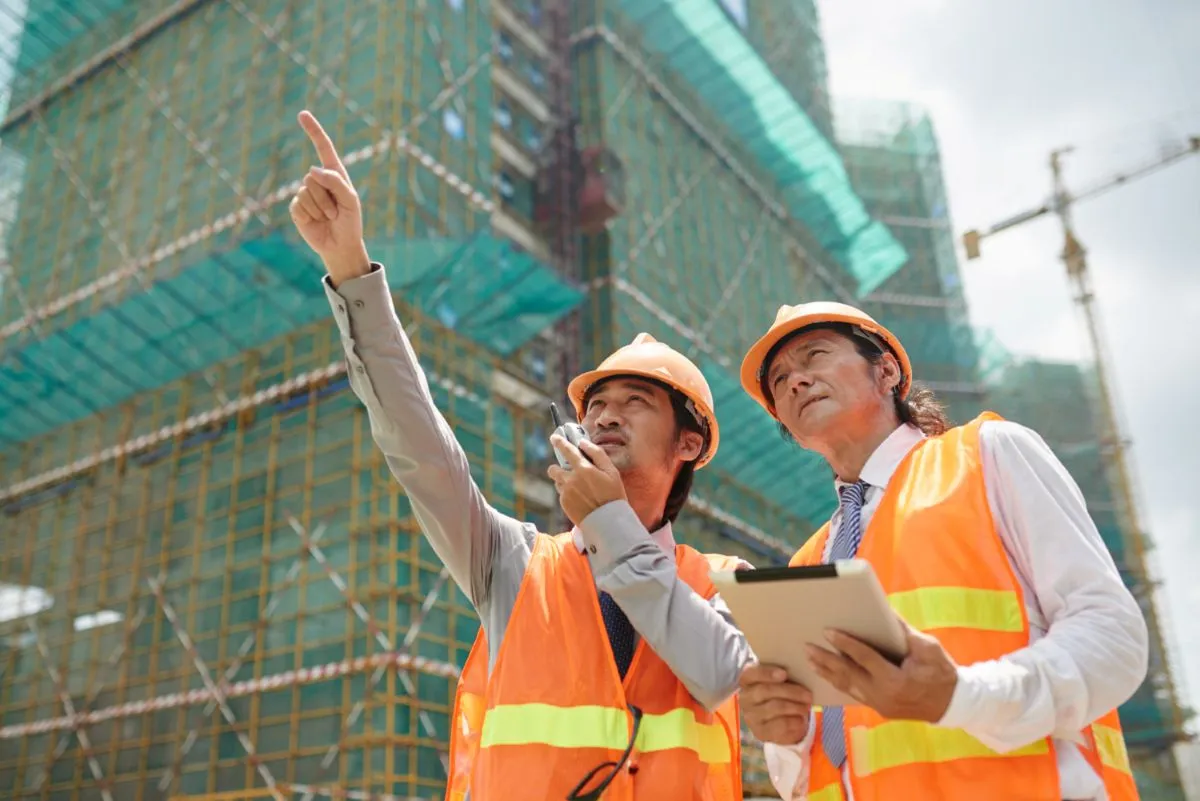Table of Contents
ToggleThe Vietnam construction industry has undergone significant growth and transformation in recent years, positioning itself as a key driver of the country’s economic development. In 2024, the industry achieved an impressive growth rate of approximately 7.8% to 8.2%, the highest since 2020. This remarkable performance highlights the sector’s resilience and its pivotal role in Vietnam’s urbanization and infrastructure expansion.
Key Infrastructure Projects Driving Growth of The Vietnam Construction Industry
Several large-scale infrastructure projects have been instrumental in propelling the construction industry’s expansion and modernization.
North-South High-Speed Railway
One of Vietnam’s most ambitious projects, the North-South High-Speed Railway, was approved by the National Assembly in November 2024. With an estimated investment of $67 billion, this 1,541-kilometer railway will connect Hanoi and Ho Chi Minh City, allowing trains to travel at speeds of up to 350 km/h. The project aims to reduce travel time between the two cities from 30 hours to just five. Construction is set to commence in 2027, with operations expected by 2035.
Read more: Tourism in Vietnam: A Rising Powerhouse in Southeast Asia
North-South Expressway East
Spanning approximately 2,063 kilometers, the North-South Expressway East is a critical infrastructure project connecting Lạng Sơn in the north to Cà Mau in the south. The expressway is being developed in multiple phases, with several sections already completed or under construction. This project is expected to significantly enhance connectivity and stimulate economic activities across various regions of the country.
Ho Chi Minh City Metro Line 1
December 2024 marked a major milestone in Vietnam’s urban transportation sector with the inauguration of Ho Chi Minh City’s first metro line. Line 1, stretching 19.7 kilometers from Bến Thành Market to Suối Tiên Park, features both elevated and underground sections. Designed to alleviate traffic congestion and promote public transportation, this metro line is a crucial step toward modernizing urban mobility in Vietnam’s largest city.
Foreign Investment and International Collaboration
Foreign direct investment (FDI) has been a major catalyst for Vietnam’s construction industry. In the first half of 2024, FDI inflows reached approximately VND 433.7 trillion ($18 billion), reflecting a 10.9% year-on-year increase. Notably, India’s Adani Group has expressed interest in Vietnam’s aviation infrastructure, particularly in the development of Long Thành and Chu Lai airports. Such international collaborations highlight Vietnam’s attractiveness as a destination for infrastructure investment.
Read more: Vietnam Payroll Guide: Compliance, Compensation, and Employer Responsibilities
Challenges and Future Outlook
Despite its rapid expansion, the construction sector faces several challenges that need to be addressed to sustain long-term growth.
Labor Shortages and Rising Material Costs
A shortage of skilled labor has been a persistent issue in Vietnam’s construction sector, driven by rapid urbanization and increased demand for infrastructure projects. Many skilled workers are seeking opportunities abroad, leading to a workforce gap that impacts project timelines and costs. To mitigate this, companies are investing in vocational training programs and government-led initiatives to attract and retain skilled workers within the domestic market.
Additionally, rising material costs have added pressure to the industry. The increasing prices of essential raw materials such as cement, steel, and sand have led to higher project expenses. Global supply chain disruptions, fluctuating fuel prices, and increased demand for construction materials have further exacerbated these costs. Developers and contractors are now exploring alternative materials, bulk purchasing strategies, and improved supply chain management to control expenses and ensure project feasibility.
Sustainability and Green Building Initiatives
As Vietnam continues its urban expansion, there is a growing emphasis on sustainable construction practices to minimize environmental impact. The government has introduced policies promoting green building standards, energy-efficient designs, and the use of eco-friendly materials. Several new projects incorporate smart technologies, solar panels, and energy-efficient cooling systems to reduce carbon footprints and operational costs.
Furthermore, the adoption of sustainable construction techniques, such as modular construction and the use of recycled materials, is gaining traction. These methods not only reduce waste but also enhance efficiency and cost-effectiveness. Green building certifications, such as the LOTUS certification by the Vietnam Green Building Council, are becoming more prevalent, encouraging developers to integrate sustainability into their projects. As awareness and regulatory support grow, Vietnam’s construction industry is steadily moving towards a more environmentally responsible and future-ready approach.
Read more: Vietnam’s Food & Beverage Industry: Growth, Trends, and Future Outlook
Conclusion
The Vietnam construction industry stands as a cornerstone of the nation’s economic progress, driven by ambitious infrastructure projects, substantial foreign investment, and a commitment to sustainable development. With continued government support, increasing urbanization, and technological advancements, the industry is poised for sustained growth in the coming years, reinforcing Vietnam’s position as a leading player in Southeast Asia’s infrastructure landscape.
Contact us today to learn how our EOR services can facilitate your successful entry into Vietnam’s dynamic construction sector. Check our services here or book a free consultation now.







